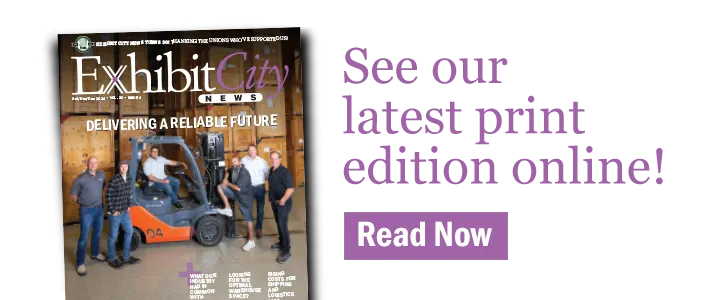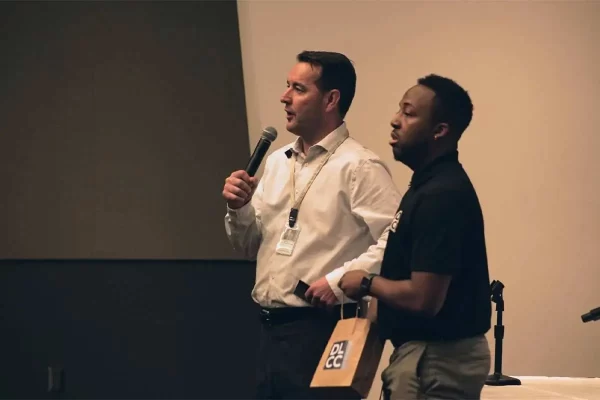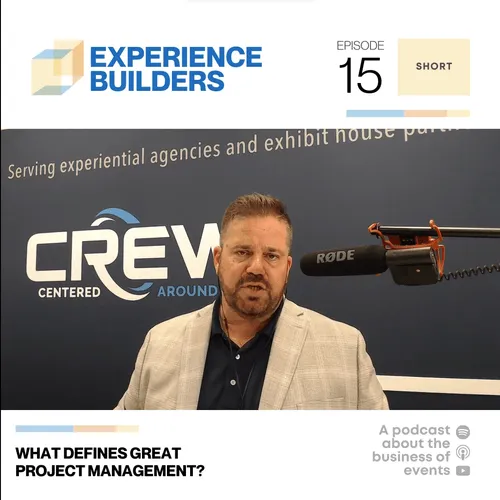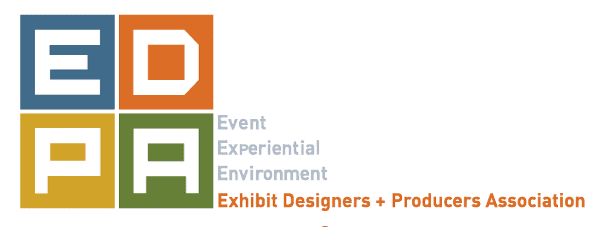Hello class…it’s time for another lesson. Last month we talked about pre-show marketing, so this month we are going to talk about at-show marketing opportunities; and all those of you with a hint of deductive reasoning skills can probably guess what we will be covering next month. You got it ‑ post-show marketing.
As you can imagine, there are a number of at-show marketing activities to be considered. Suffice to say we need our well-documented audience profiles to evaluate and select the right mix of at-show marketing options. We also need to decide what you want to achieve with them. The most common objective is to get more people from your target audience to come to your booth during the show. Here are a couple of examples to get us going. With a little bit of brainstorming, I am sure you can come up with more than twice as much.
- Advertising in show catalog or show publications
- Airport advertisements
- Billboards (including mobile ones – such as signs on show buses or taxis)
- Hospitality events
- Breakout session or sponsored presentations/speeches
- Hotel TV, in room brochures, room key advertising
- Show hall banners/ads
- Items included in the attendee kit/bag
- Show publication public relations (specifically for media published during the event)
- In-booth promotions
Since many of those options have a very broad audience, you may wonder why the target prospect profile is important here. Of course you need it to target your message, but you can also use it to find the most cost effective placement.
For example, your target audience might be more likely to stay in three-star hotels than in high-end hotels or vice versa. Your target audience might be more likely to drive to the event than arrive at the airport or they might be more likely to attend specific lunches or networking events than others.
Check any marketing opportunity you have against your target profile and consider the likelihood that your advertising will be seen and noticed by your target audience and what the cost per eye-ball – or I guess pair of eyeballs is.
Being noticed and being paid attention to is obviously mission critical, so take into account what other distractions will compete with your advertising at that time. For example there is only space for one advertisement on a room key, while many pieces of promotional material will be in the attendee bag. Or it might sound like a good idea to sponsor and present at a show lunch since most attendees will be there, but can you really compete with everyone’s desire to just eat and catch up with colleagues or business partners?
In addition to creating more awareness for your exhibit, there are also marketing opportunities to better promote your products once people come to – or at least by your booth.
Popular marketing ideas are celebrities at a booth, contests or drawings, giveaways, live entertainment or live presentations. Many of those run the risk of attracting too broad an audience however and your tradeshow return on investment (ROI) will almost always be higher with fewer quality leads than a large number of more or less random collected attendee information that does nothing but simply waste your sales team’s time.
Once you do have the right attendees in your booth, you have to provide the marketing material that is relevant for them. When you create brochures or data sheets, make sure to focus on the benefits your offering provides and don’t get too hung up on features or technical specifications. That information is often required, but don’t lead with it. While this kind of material is usually a necessity, realize that we are all trained to be suspicious of marketing material.
Research shows that third-party article reprints or case studies appear much more credible to readers than any traditional marketing pamphlet, especially case studies with customer quotes that cover an attendee’s industry or specific application of your product or service. They are very powerful tools, and you should select those carefully to match the targeted audience at the show.
At the beginning of my column I mentioned we’d be talking about post-show marketing next month. The last item I want to discuss today is somewhere in-between. The actual activity occurs during the show, but you don’t get the benefits until after the show.
I am talking about media and public relations activity, of course. Unless you are working with a daily news media, odds are any coverage of your company, products or service will happen after the show. But it is during the show that you have the opportunity to pitch to members of the media and convince them to cover the information you provide them. It is usually a good idea to participate in event-sponsored public relations activities and you should make sure you have something to announce and provide that information in the pressroom. Not unlike with the printed material we discussed above, being able to produce real-life customer information is usually much better than a nicely written press release or media pitch.
Odds are some of your good customers will be at the show. See if some of them are willing to attend a few media meetings. You will find this makes it much easier to get media attention and your customer is often happy about the opportunity to talk about their business to the media. Not unlike an attorney in a court, you do want to have a pretty good idea about what your witness is going to testify to, however.
That’s it for this month’s lesson. Bye for now!
HOMEWORK
Make a list of at-show marketing opportunities that are targeting your prospects and fit within your budget. Rank them based on cost/benefit ratio. Go through your show collateral and make sure you have third-party testimonials amongst them, whether case studies or article reprints.
About Linda Musgrove
Linda Musgrove is president of the tradeshow training firm, TradeShow Teacher. She focuses on teaching companies to significantly improve tradeshow results through strategic, customized tradeshow training for individuals, departments or entire teams. Musgrove also presents customized training programs for tradeshow producers to offer exhibitors. Most recently she authored The Complete Idiots Guide to Trade Shows, published by Alpha Books/Penguin Publishing. Learn more at /www.tsteacher.com and sign up for the free monthly Trade Show Tactics newsletter. Follow her on Twitter at: twitter.com/tsteacher or send an invite to connect on LinkedIn via e-mail at linda@tsteacher.com.






























